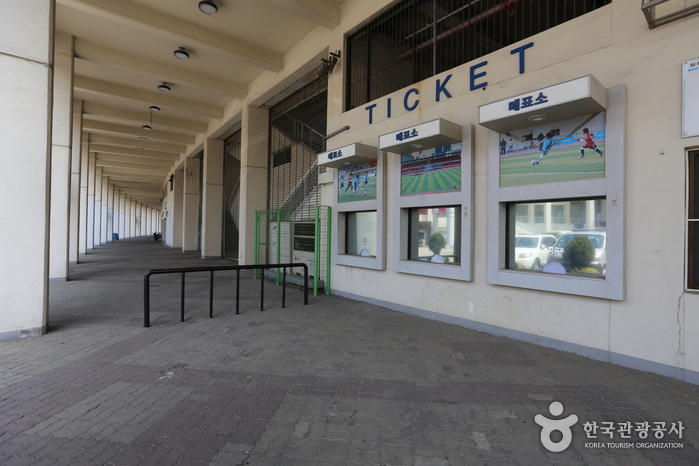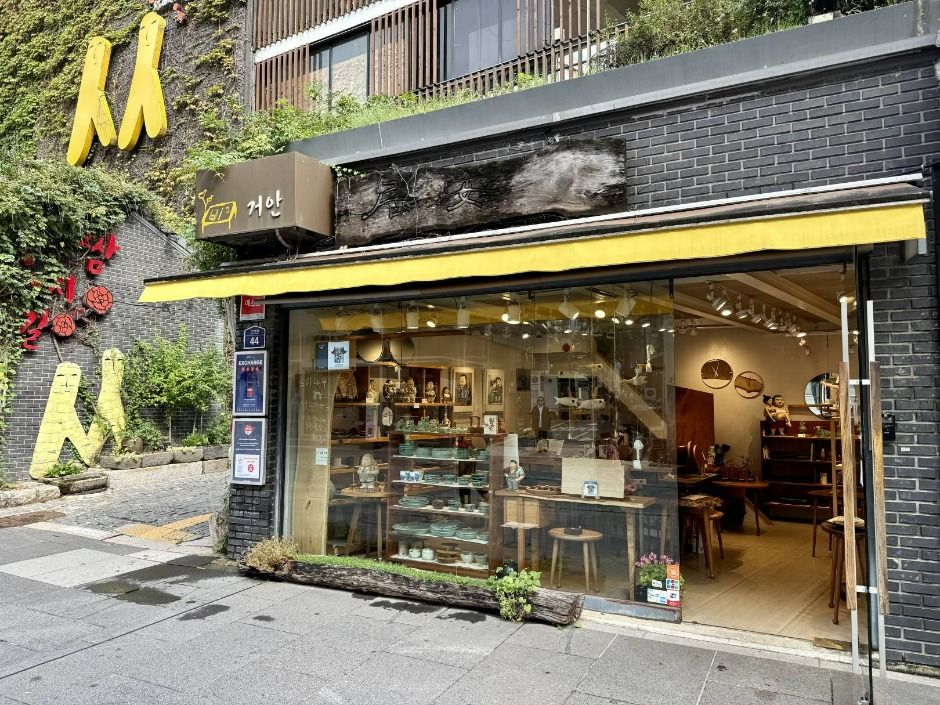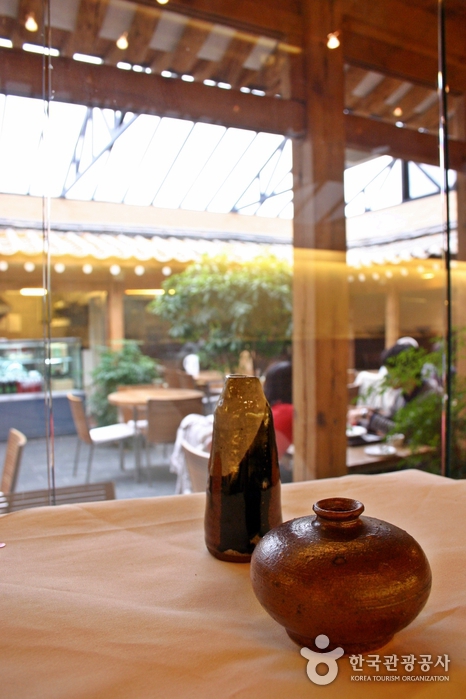Museo Kimchikan (뮤지엄 김치간)
5.3Km 2025-05-26
Insadong-gil 35-4, Jongno-gu, Seúl
Desde su fundación en 1986, el Museo Kimchikan ha expuesto las reliquias históricas relacionadas con el kimchi, los diversos tipos, maquetas de los procesos del preparado, e información sobre la eficacia derivada de su proceso de fermentación. Los visitantes aprenderán sobre el origen y la historia del kimchi a través de libros, pinturas y escrituras antiguas, y los diferentes tipos de vasijas almacenadoras de kimchi junto con los utensilios tradicionales de cocina que se utilizaban para prepararlo. También se exponen diferentes tipos de kimchi característicos en cada región de Corea y espacios para actividades.
Estadio Mokdong (목동종합운동장)
5.3Km 2021-03-22
Mok-dong, Yangcheon-gu, Seúl.
+82-2-2240-8800
Inaugurado el 4 de noviembre de 1989, el Estadio de Mokdong alberga diversas instalaciones deportivas. El estadio principal es usado para partidos de fútbol y eventos de atletismo, y puede albergar a 22.000 personas. El estadio de béisbol tiene una capacidad de 16.000 espectadores. Una pista de hielo bajo techo, gestionada por el Centro de Deportes Invernales de Corea, es usada para hockey sobre hielo, patinaje artístico y otros deportes de invierno; y cuenta con capacidad para 7.000 personas. Además, el estadio cuenta con una zona de tiro bajo techo, una club de fitness, un gimnasio y diversas instalaciones de servicios.
Tienda de Suvenires Coreanos en Insa-dong (한국관광명품점(인사동))
5.3Km 2024-02-19
Insadong 5-gil 14, Jongno-gu, Seúl
Geoan (거안)
5.3Km 2025-10-23
Insadong-gil 44, Jongno-gu, Seúl
Ssamzigil (쌈지길)
5.3Km 2025-05-26
Insadong-gil 44, Jongno-gu, Seúl
En las animadas calles de Insa-dong se fundó un área de 500 m de largo el 18 de diciembre de 2004. Este edificio tan particular fue construido conectando las encantadoras calles con escaleras en forma de espiral. Al ir haciendo compras por las divertidas y encantadoras tiendas hasta el último piso, llegará a Haneulmadang, donde podrá tener una buena vista del cielo. Ssamzigil cubre una superficie de aproximdamente 4.000 m² con más de 70 tiendas de artesanías, galerías de arte, restaurantes y tiendas de recuerdos.
Mercado de Pescados y Mariscos de Noryangjin (노량진수산물도매시장)
5.3Km 2024-01-25
Nodeul-ro 674, Dongjak-gu, Seúl.
Este mercados es un importante nexo distribuidor de productos pesquero en la ciudad de Seúl, inaugurado en 1927. Además, es el mercado mayorista más grande de Corea. Desde antes de entrar al recinto podrá sentir el fuerte olor del mar y el pescado. Se quedará impresionado por la escena dinámica de los comerciantes y compradores. Durante los 365 días del año podrá encontrar almejas, cangrejos, calamares, pulpos y otros mariscos y pescados frescos a un precio muy asequible. Además de comprar y llevárselo a casa, también podrá degustar los pescados crudos rebanados en el mismo mercado. Lo único que deberá hacer es comprar el pescado, llevarlo a algún restaurante.
Insadong Chatjip (인사동찻집)
5.4Km 2025-06-24
33-1, Insadong-gil, Jongno-gu, Seoul
Insadong Chatjip is a hanok teahouse that serves home-made traditional tea. Even the red beans used in the summer delicacy patbingsu
Centro Conmemorativo de la Guerra (전쟁기념관)
5.4Km 2025-06-20
Itaewon-ro 29, Yongsan-gu, Seúl.
El lugar donde se construyó el Centro Conmemorativo de la Guerra era el cuartel de la Infantería Nacional. Para la construcción de este centro se consultaron a diferentes expertos de variados campos y se realizaron exhaustivas investigaciones para completar las exposiciones. Este centro conmemorativo es el establecimiento más grande del mundo dedicado al tema de la guerra. Aquí puede visitar las 8 exposiciones: la de Hongukchumo, la de la historia de las guerras, la de la Guerra de Corea, la de la expedición de soldados al extranjero, la del desarrollo militar, la de los grandes aviones y la que se realiza al aire libre. La exposición Hogukchumo fue fundada en honor a los espíritus de los heridos durante la batalla.
También se exponen diferentes tipos de armas y grandes equipamentos militares dentro y fuera del edificio. En la exposición dentro del edificio se exponen armas y avíos utilizados durante la Guerra de Corea y los utilizados en los diferentes países durante la II Guerra Mundial y la Guerra de Vietnam para que puedan ser comparados. En la exposición del segundo piso, se pueden ver muchos tipos de materiales de defensa tanto reales como muestras. En la exposición de armas Bangsan puede encontrar armas y equipamento de guerra producidos en Corea. En la sala de almacenamiento del centro conmemorativo se preservan 17.800 columnas y artefactos de guerra. Se instalaron modernos dispositivos de preservación y control de daños para mantener estos materiales intactos. Además, puede visitar la exposición miniatura o el Pabellón de la Paz. Hay un sitio de conferencias donde se dan clases con temas de la guerra. Si hay algún libro que desee leer sobre guerras, puede dirigirse a la librería de este centro, donde también encontrará folletos y libros militares y suvenires. Los restaurantes de comida rápida y tiendas se encuentran fuera del edificio.
Yangbandaek (양반댁)
5.4Km 2025-05-14
19-18, Insadong-gil, Jongno-gu, Seoul
Museo del Té Areumdaun (Beautiful Tea Museum) (아름다운 차박물관)
5.4Km 2025-12-17
Insadong-gil 19-11, Jongno-gu, Seúl.
El Museo del Té Areumdaun es un espacio multicultural y comprende una galería que invita a descubrir obras de porcelana realizadas por jóvenes artistas, una tienda que propone alrededor de 110 tipos de té de Corea, China, Japón, Taiwán, Sri Lanka, India y países de Europa, y un salón para degustar un buen té. La sala de exposiciones se divide en tres secciones destinadas respectivamente a Corea, China y el Tíbet. Allí se exponen diversos estilos de servicios de té para tener una impresión de las características del arte del té de cada país. Asimismo, jóvenes artistas organizan exposiciones y ventas. El museo expone cerca de 130 tipos de té, podrá comprar o degustar diferentes variedades como té clásico, té verde, té azul, té negro, té a las hierbas, té a las flores, etc.




 Español
Español
 한국어
한국어 English
English 日本語
日本語 中文(简体)
中文(简体) Deutsch
Deutsch Français
Français Русский
Русский